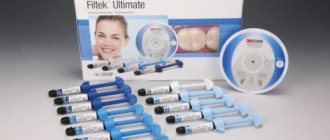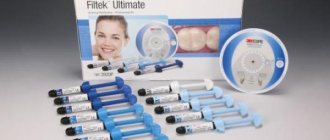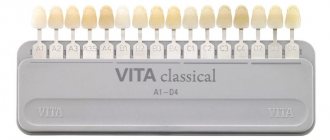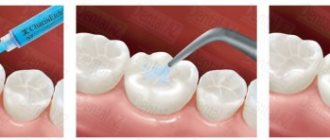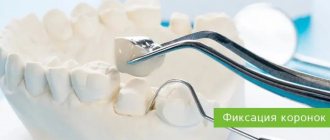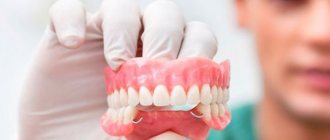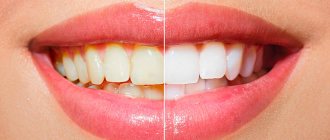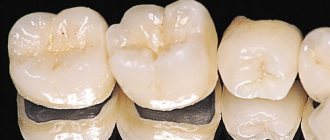Designed specifically for application in one portion, which significantly reduces the time of the posterior teeth restoration procedure
The new composite material for the restoration of lateral teeth, Filtek™ Bulk Fill Posterior, combines all the properties necessary for a dentist: convenience and speed due to single-portion filling of the tooth cavity, strength and resistance to abrasive wear due to nanocluster technology, low polymerization shrinkage due to two innovative monomers and In addition, excellent adaptation and ease of modeling. With the ability to deliver up to 5mm of volume, Filtek™ Bulk Fill Posterior reduces the time the patient spends in the dental chair, leaving the dentist time for what matters most. Two innovative monomers in the material formula provide low polymerization stress and the possibility of volumetric application of the material. There are contraindications, it is necessary to consult a specialist.
general information
Filtek is a composite material widely used for dental restoration. It was developed by specialists from the famous ZM ESPE corporation at the beginning of this century.
For the first time, specialists used the latest technologies - the introduction of nanoparticles, nanoclusters and their combinations into the composition of the composite. This ensured the material long-term strength and exceptional aesthetics.
A large number of shades of the composite are presented, and this makes it possible to use it on any part of the dentition. At the moment, Filtek is firmly established in the arsenal of modern dentists.
Filtek™ Ultimate
VAT 10%
Country of origin : USA
Manufacturer company:
Reflecting true beauty with Filtek™ Ultimate Filtek™ Supreme XT has already gained recognition among dentists as a highly aesthetic and reliable material. But 3M ESPE, being a recognized leader in the field of nanotechnology, always strives to improve its products. Filtek™ Ultimate, the next generation of nanocomposites, is the result of this work. If you have never worked with universal Filtek™ Supreme composites, then you have yet to find out why this material is so loved by dentists around the world. If you already use Filtek™ Supreme XT in your practice, then you will definitely like the improved characteristics implemented in Filtek™ Ultimate - better gloss retention, fluorescence like a natural tooth, improved handling properties of transparent shades. You'll also appreciate that Filtek™ Ultimate is very easy to work with: more options for one-shade restorations, large, easy-to-read font on labels and, as before, large labels.
Filtek™ Ultimate syringes have different colors depending on the opacity, which also greatly speeds up the shade selection procedure. Magnificent restorations - now easier than ever! 3M ESPE introduces the new 3M™ ESPE™ Filtek™ Ultimate composite material. In this material, we have retained all the best and already familiar qualities of its predecessor - the Filtek™ Supreme XT nanocomposite and have made a number of changes, such as improved polishability and durability of gloss, fluorescence, which will allow you to create even more perfect restorations. For easier and faster work, we have expanded the possibilities of creating single-layer, but no less aesthetic, restorations by expanding the range of basic shades (Body).
Benefits obvious at first glance Easy to use • Excellent handling properties • More Body shades – more possibilities to create aesthetic restorations using one shade • Easy to read packaging Natural aesthetics • Excellent polishability • Large variety of shades and translucencies • Improved fluorescence Unique nanotechnology • Better gloss durability than microfil • Excellent wear resistance • Possibility of use for the restoration of anterior and posterior teeth New generation of nanocomposites - new opportunities that you have long dreamed of! We know that you, as a true master, strive to achieve perfection in each restoration, using two-layer and multi-layer techniques. We offer 36 shades of Filtek™ Ultimate composite for your choice. And to make the color selection procedure as simple and fast as possible, the syringes have different colors depending on the opacity of the material. Regardless of the chosen technique, the result will exceed your expectations. Excellent handling properties and improved polishability are properties that can surprise even the most demanding dentist. Key changes: Excellent polishability Filtek™ Ultimate nanocomposite has excellent polishability and maintains a dry sheen better than microfilament. Improved properties of transparent shades Now transparent shades have the same consistency as shades of other opaques. The material does not stick to tools and is convenient to work with. In addition, the strength characteristics of transparent shades have become much better. They can be used to restore the cutting edge. Unique nanotechnology. The benefits are obvious! To understand how Filtek™ Ultimate can achieve results that cannot be achieved with other composites, it is necessary to understand the nanotechnology that underlies this material and what makes it different. Perfect polishability, noticeable at first sight!
Scientific approach The secret is in nanoparticles, which ensure that Filtek™ Ultimate maintains a dry shine for a long time. Most restorations have an excellent initial shine. But you probably want to be sure that the restorations you create will retain their original shine for many years. Laboratory tests have proven that the dry shine retention of Filtek™ Ultimate restorations is better than other composites and even better than microfills. The secret is that Filtek™ Ultimate is based on a unique patented technology for creating clusters consisting of nanoparticles. Under abrasive action, the cluster is gradually erased in the same way as the surrounding resin. This allows the restoration to maintain a smoother surface for a longer period of time. Unlike Filtek™ Ultimate, most other composites, including micro- and nanohybrids, contain large particles. When subjected to abrasive action, these particles are detached from the surface of the restoration, which causes it to become rough and lose its shine over time. True 3M ESPE nanotechnology provides restorations with wear resistance equal to the wear resistance of natural tooth enamel. Research on the wear resistance of restorations on the contact surface*, conducted over the past 5 years, has statistically proven that there is no difference in the degree of abrasion of restorations made of Filtek™ Supreme XT nanocomposite and natural tooth enamel. Filtek™ Ultimate is also powered by 3M's patented ESPE nanotechnology, and in vitro studies have shown that Filtek™ Ultimate has the same durability as Filtek™ Supreme XT. Therefore, you can use Filtek™ Ultimate to restore all groups of teeth and be absolutely confident in the durability of all restorations.
Release form and composition
The basis of the Filtek filling material is acrylic polymer resins of various types. Each type of composite has its own specific composition , depending on the purpose of application.
To impart color to a future filling, fillers are used in the form of silicon and zirconium nanoparticles, and their combinations - nanoclusters. The sizes of these particles range from 0.6 to 20 nm.
The color of the future filling depends on the filler included in the base material. More precisely, it depends on the size and quantitative ratio of nanoparticles and nanoclusters in it. The smaller their size, the denser and more matte the filling will be.
Composite mass of various compositions, placed in syringes, is included in the package of ready-made kits for work. Depending on the goals and objectives, there are several varieties.
Single Shade Set
A set of this type contains syringes with composite material in the amount of 2 pieces. The filling material has colors A2, A3, which have the classification “body” - universal.
The kit comes with instructions for use with technical specifications.
Dual Shade Kit
This kit contains a set of 4 syringes. Available shades - 2 syringes for dentin restoration - A3, A4; 2 syringes for enamel restoration – A2, A3.
Additionally, the set contains an auxiliary scale for selecting the desired color. The kit is supplied with technical instructions.
Composition and properties of glass ionomer cement for filling and indications for its use.
Let's talk here about the tactics of unfilling root canals.
At this address https://www.vash-dentist.ru/lechenie/zubyi/plombyi/idealnyiy-variant-spektrum.html we offer a detailed description of the Spectrum filling.
Professional set
The professional set contains 12 working shades of the material:
- A2, A3, B3 – for restoration of dentin zones;
- A1, A2, A3, W – for work on the enamel layer;
- B2, A2, A3, A3.5 – universal “body” shades;
- AT is a shade with a transparent effect.
As in the previous case, the kit contains an auxiliary color selection scale and instructions for use.
In addition to specially selected kits, separate syringes filled with composites of certain compositions are produced. The most common ones are Filtek Z250 and nanohybrid Z550.
Filtek Z250
Available in separate 4 g syringes. It is a microhybrid material and contains an increased amount of nanoparticles. It has particularly high strength and adheres well to the walls of the tooth.
The range of applications is very wide:
- filling all types of cavities on the front and side teeth;
- performing veneers;
- splinting.
The color range of this type of composite includes 15 shades, which ensures its use in the restoration of any area of the dentition.
A filling made from Z 250 completely eliminates the possibility of recurrent caries.
Nanohybrid Z550
This series of composites is a modification of the Z250 series. It consists of nanoparticles and nanoclusters. Also available in syringes of 4 g.
Presented in 12 types of shades, each of them is radiopaque and fluorescent.
It is mainly used for reconstruction of the frontal and lateral parts of dental groups. It is simple and convenient to use; it does not stick to tools or gloves.
Allows you to perform any tooth modeling and subsequently retains the completed shape well.
RECOMMENDATIONS FOR USE
FOR A BETTER ADJUSTMENT TO THE CAVITY WALLS, USE:
Filtek Bulk Fill Posterior: instructions for use
- Flowable composite material as an adaptive layer, for example, dental fluid restoration material Filtek Ultimate Flowable
- Apply FiltekTM Bulk Fill Posterior into the cavity under pressure from the capsule using a dispenser. Do not tear the tip of the cannula away from the material, this will prevent the formation of pores.
- Use a large ball-shaped plugger for adaptation.
Advantages
The filling composite of the Filtek line is one of the latest generation materials. It is logical that it has a number of advantages over previous options:
- shrinkage after polymerization and exposure to light is minimized;
- high strength;
- duration of use as a filling;
- good fit into the required cavity;
- high polishing effect;
- long-lasting shine;
- the ability to create the desired color effect.
All these qualities have made this material indispensable in the work of modern dentists.
What is a cement filling on a tooth and expert reviews about the material.
In this article, read about the indications for dental retreatment.
Follow the link https://www.vash-dentist.ru/lechenie/zubyi/kofferdam-v-stomatologii.html to learn more about the rules for applying a rubber dam in dentistry.
COMPOUND
Fillers are a combination of 20 nm non-agglomerated/non-aggregated silica, 4-10 nm non-agglomerated/non-aggregated zirconia, aggregated zirconia/silica cluster filler (20 nm silica and 4-11 nm zirconia) ), as well as a filler based on ytterbium trifluoride, consisting of agglomerated particles 100 nm in size. The proportion of inorganic filler is about 76.5% by weight (58.4% by volume). Filtek™ Bulk Fill Posterior contains ERGP-DMA, diurethane-DMA and 1, 12-dodecane-DMA. Filtek™ Bulk Fill Posterior is placed into the cavity after using a methacrylate-based adhesive, such as those from 3M, to ensure permanent bonding of the restoration to the tooth structure. The material is packaged in standard syringes and disposable capsules.
Preparatory activities
Working with the proposed composites requires certain preparatory work.
The first step is standard brushing of teeth using normal hygiene products. Then the dentist performs a complete sanitation of the oral cavity. It includes treatment, inflammation removal and professional cleaning.
The final stage of preparation is the correct selection of the shade of the proposed filling. It is executed in the following order:
- Dividing the tooth into segments. The body of the tooth has some heterogeneity in color tone in different areas.
To reconstruct it correctly, the entire area is divided into 3 segments. Each of them is filled with a composite that matches the color for the given area.The area near the neck of the tooth is restored with yellow material. For the middle, composites of gray, yellow or brown color are used. The upper (incisal) border is made in grayish or blue shades.
- Selection of shade. The color and its saturation of each of these areas is checked using an auxiliary color scale, corresponding to that part of it that is identical to the thickness and color of the desired area of the tooth.
- Checking the correct selection. To control the correct choice of shade, the composite is applied to the desired location.
After its polymerization, a visual assessment is made using different types of light. If necessary, adjustments are made until the desired effect is achieved. - Isolation and protection of the treated area from other teeth is carried out using a latex napkin (rubber dam). If it is not available, then the use of cotton swabs or a saliva ejector is used.
This concludes the preparatory work before the restoration of damaged surfaces begins. It must go through the full cycle, regardless of which method of tooth reconstruction is chosen.
Composition and release form
The composition is based on polymer resins. They are presented in several versions:
- Bis-GMA;
- UDMA;
- TEGDMA;
- PEGDMA;
- Bis-EMA.
The color of the filling is given by the filler:
- non-aggregated silicon filler with a size of 20 nm;
- non-aggregated zirconium filler 4-11 nm;
- dispersed zirconium and silicon cluster filler.
The size of the particles will depend on the type of material itself. In enamel, dentin and body shades they will measure 0.6-10 microns.
For transparent flowers, the optimal value is 0.6-20 microns.
The composite is available in the form of a syringe weighing 4 g. They can be purchased in various sets.
Single Shade Trial Kit
The set includes 2 syringes in shades A2 and A3, 2 pieces, both Body. The kit also includes technical instructions.
Dual Shade Trial Kit
Includes 4 types of material:
- dentin shades A3 and A4;
- enamel shades A2 and A3.
Plus a scale for choosing the color of the material and technical instructions are added.
Professional set
The set consists of 12 shades:
- dentin colors A2, A3, B3;
- enamel colors A1, A2, A3 and W;
- body colors A2, A3, A3.5 and B2;
- transparent shade AT.
A scale for determining color and technical instructions have also been added.
The fourth configuration option is individual syringes.
Restoration methods
After all the preparatory work has been completed, a method for restoring lost teeth or dental surfaces is selected. Two main methods are used .
Direct recovery
In this case, restoration is carried out in the following order:
- The required cavity is processed.
- A pad with medicine is placed inside (if necessary).
- A matrix is inserted to ensure interaction between adjacent teeth.
- Dentin and enamel are etched.
- The adhesive is applied and time is given for its polymerization.
- The required amount of composite is placed in a block protected from light. The syringe with the remaining material should be immediately closed with a cap.
- The composite is applied in layers similar to tiles into the finished hole.
- Each layer should be illuminated in turn with a lamp containing halogen or LEDs.
- The filling is given the required contours using burs and finishers.
- It is necessary to ensure contact between the teeth - the filling is adjusted if it is insufficient. In this case, articulating paper is used.
- Final grinding and polishing of the restored area is carried out.
Indirect technique
Obviously, this method is much more labor-intensive. But in some cases there is no choice, and restoration of a lost tooth is only possible using the indirect restoration method.
This method includes the preparatory stage described above and the following operations:
- The doctor selects the type of structure and performs a complete treatment of the tooth.
- An impression is taken from the processed unit.
- In the laboratory, plaster models are made from a cast.
- The finished model is covered with a separating layer.
- The composite is applied to the tooth in layers, each layer is processed with a special light lamp.
- Formation of the desired contours and polymerization.
- The structure is adjusted, finished and polished, followed by testing on a tooth model.
- The doctor checks the stability of the structure in the treated cavity. If defects are found, they are eliminated at the place of manufacture.
- A rough texture is created on the internal surfaces.
- The prosthesis is treated with a soap solution by placing it in a bath with ultrasound. After this, it is thoroughly washed with water and dried.
- The finished product is fixed in the desired place with special cement.
Preparation and restoration
Restoration requires preliminary preparation methods, including professional teeth cleaning, removal of inflammatory processes, and dental treatment.
The next important stage of preparation is the selection of shade:
- Teeth are divided into segments, since the shade for the frontal and lateral areas may differ. Yellowish shades are used for the neck of the tooth, brown, yellow and gray shades for the middle part, and blue and grayish shades for the incisal part.
- The selection of shade and color saturation is carried out, identical to natural.
- Selection control. A small amount of the composite is applied to the enamel to compare the shade and naturalness of the selected color;
- Protection, isolation of the working area from surrounding tissues. For this, special napkins, rubber dams and other methods are used.
Restoration is performed using two methods - direct and indirect methods.
The direct method requires the following steps:
- surface treatment, insertion of a gasket impregnated with drugs into the cavity;
- insertion of a matrix between adjacent teeth;
- etching of enamel, dentin;
- application of an adhesive agent, its polymerization;
- applying the composite material in layers, each layer must be illuminated with a special lamp for polymerization;
- the syringe closes immediately, which reduces the time of contact of the material with air;
- surface formation using finishers, burs;
- correction of fillings using articulating paper;
- grinding, polishing the filling.
The indirect method has similar steps to the direct one, but also additionally requires the following actions:
- processing the tooth and taking an impression to make a plaster model;
- manufacturing a structure with layer-by-layer application of material and polarization;
- adjustment of the structure, polishing and testing on the model;
- checking cavity processing, creating roughness for improved adhesion;
- installation of the product, fastening with dental cement.
Recommendations and warnings
Working with Filtek composite paste requires compliance with certain precautions.
Acrylic resins (especially uncured ones) included in its composition can cause an allergic reaction if it comes into contact with the skin or mucous membranes.
There are rules that, if followed, will help avoid unpleasant moments:
- When working with composites, it is necessary to use non-contact techniques and protective gloves.
- If contact of the material with the skin does occur, the area should be thoroughly washed with running water and soap.
- If the composite gets on gloves, they should be thrown away and your hands should be sanitized. For further work, use a new set of gloves.
- Syringes should be stored in tightly closed boxes, away from light (to preserve the properties of the material). Syringes are stored at room temperature.
- Contact time with the material should be reduced to a minimum.
Caution when using the Filtek composite should be exercised not only by staff, but also by patients.
You need to make sure in advance that you are not allergic to this material, and if you have one, notify your doctor.
Bottom line
Now it has become clear to you that Filtek is a nanocomposite of versatile use, which can be used not only for teeth intended for chewing, but with its help you can also restore the front teeth.
Now you have become aware of all the advantages of this composite, and it will not be difficult for you to choose the material that suits you, both for the restoration of chewing teeth and for the aesthetic restoration of the front teeth.
Sources:
- https://www.vash-dentist.ru/lechenie/zubyi/plombyi/vozmozhnosti-materiala-filtek.html
- https://dentazone.ru/preparaty-oborudovanie/materialy/filtek.html
- https://zubovv.ru/lechenie/zubyi/plombyi/svoystva-materiala-filtek.html
- https://FB.ru/article/420332/filtek-z-obschaya-informatsiya-forma-vyipuska-sostav-naznachenie-tehnologiya-provedeniya-rabotyi-pokazanie-i-protivopokazaniya-k-primeneniyu
- https://El-dent.ru/id/filtek-ultimate-kompozit-enamel-b2e-3920b2e-3m.html
- https://medicina-top.ru/%D1%81%D0%B2%D0%B5%D1%82%D0%BE%D0%B2%D0%B0%D1%8F-%D0%BF%D0% BB%D0%BE%D0%BC%D0%B1%D0%B0-%D1%84%D0%B8%D0%BB%D1%82%D0%B5%D0%BA/
This is interesting: How to choose a dentist?
Price
The cost of both sets and individual Filtek syringes varies quite widely. It depends on the configuration of the kits and the type of composite.
The average price level in Moscow looks like this:
- Set of maximum content – 22,000-29,000 rubles.
- Sets Single Shade and Dual Shade – 10,000-15,000 rubles.
- Syringes – from 2300 rub. (depending on the type).
More accurate information can be found on the seller’s website and by calling reference numbers.
From the video, learn about the new filling material Filtek Bulk Fill Posterior.
Advantages of Filtek fillings
- Filtek fillings are used not only in frontal teeth, but also in chewing ones
- Low landing
- Reproducibility of natural properties of enamel and dentin
- High aesthetics and smoothness.
- Good wear resistance.
- Material from a well-known company provides a guarantee of effective treatment
- Of course, this manufacturer has a huge range of colors.
Now let's talk about the types of Filtek filling material.
Reviews
Filtek brand filling materials are used in almost every clinic. The vast majority note the complete compliance of expectations with the results obtained.
We invite readers who have experience in restoring teeth using this material to share their opinions about it in the comments to this article.
If you find an error, please select a piece of text and press Ctrl+Enter.
Tags treatment filling material Filtek fillings
Did you like the article? stay tuned
Previous article
Provocateurs of alveolar bleeding and ways to combat complications
Next article
Review of traditional and innovative gingivotomy method
